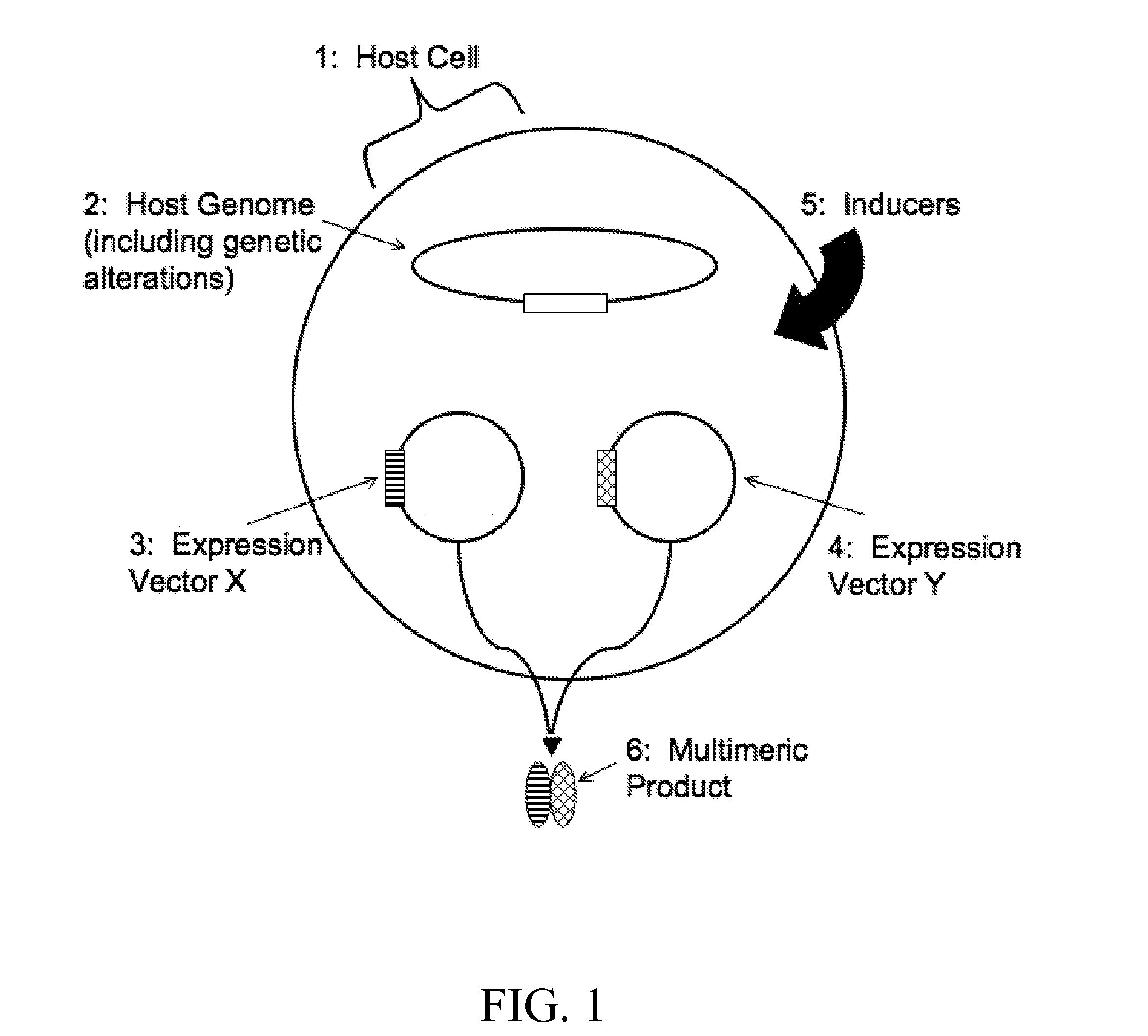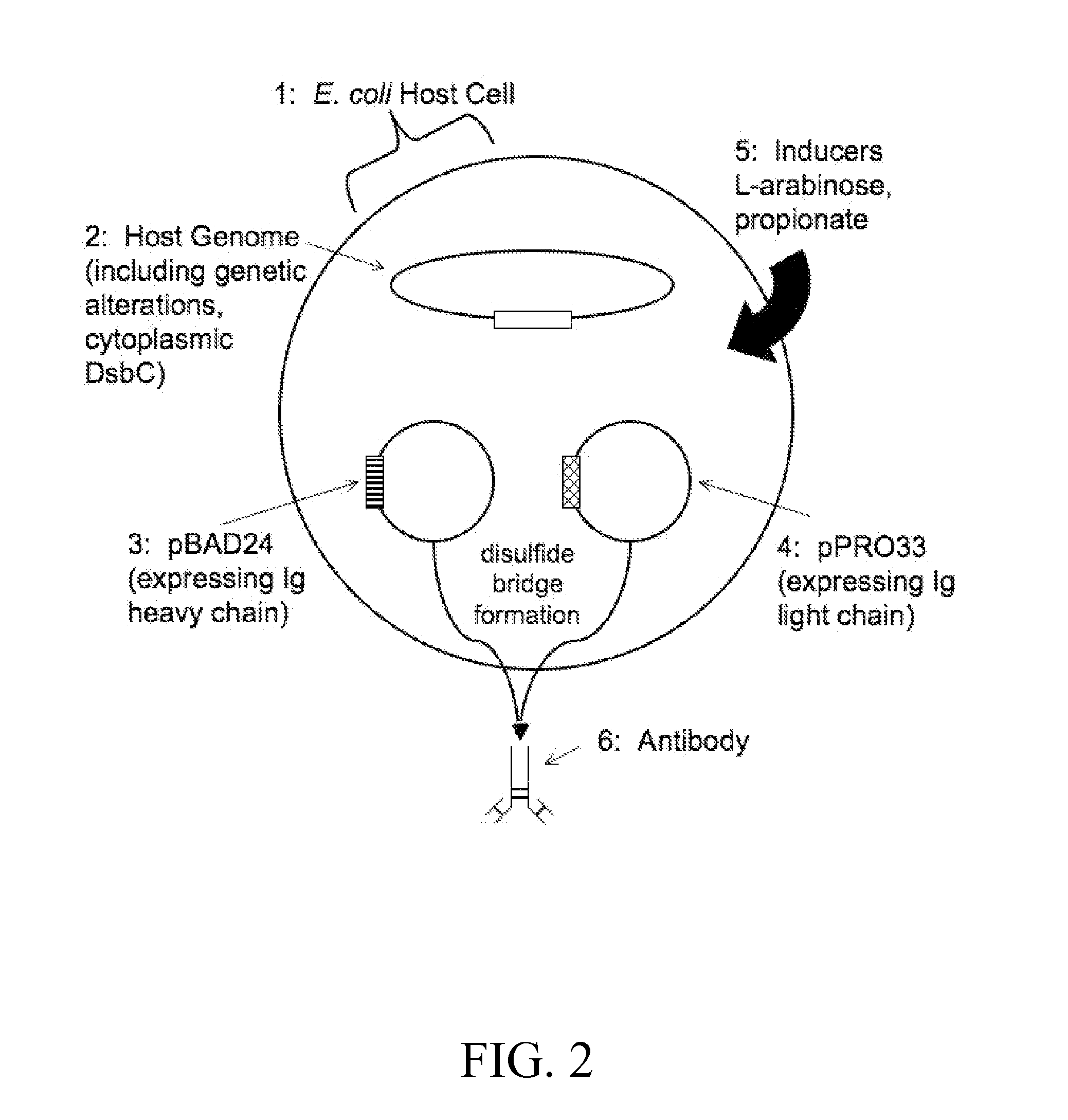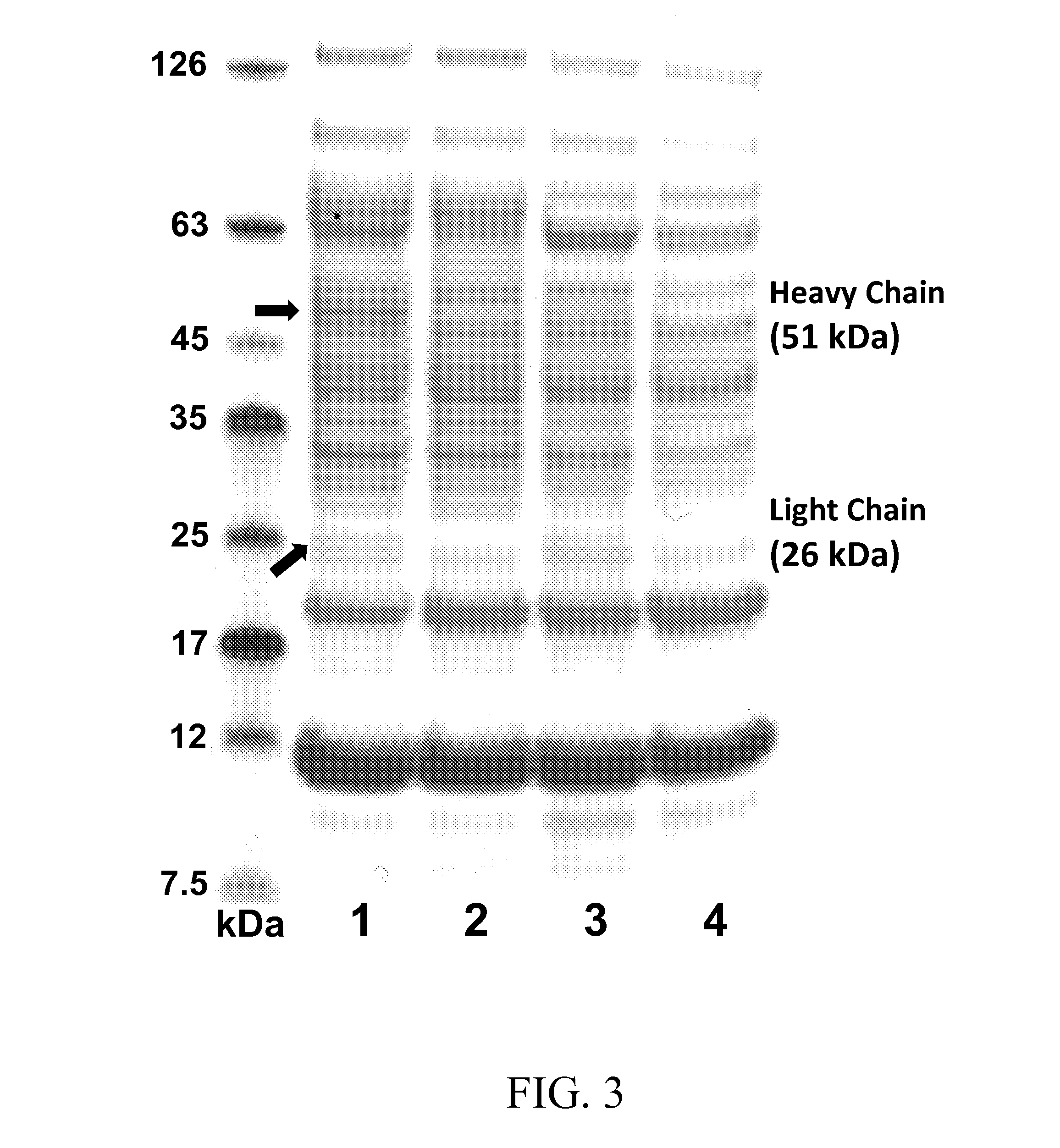Inducible coexpression system
a coexpression system and inducible technology, applied in the field of molecular biology and biotechnological manufacturing, can solve the problems of limited utility of systems in coexpression of difficult, limited compatibility between expression vectors based on ara and lac inducible promoters, etc., to and reduce the level of gene function
- Summary
- Abstract
- Description
- Claims
- Application Information
AI Technical Summary
Benefits of technology
Problems solved by technology
Method used
Image
Examples
example 1
Inducible Coexpression of IgG1 Heavy and Light Chains to Produce Full-Length Antibodies in Bacterial Cells
A. Construction of Expression Vectors
[0125]The inducible coexpression system was used to produce full-length antibodies, specifically mouse anti-human CD19 IgG1 antibodies, in bacterial cells. The coding sequence for the mouse anti-human CD19 IgG1 heavy chain (‘IgG1 heavy chain’, ‘IgG1HC’, ‘heavy chain’, or ‘HC’) is provided as SEQ ID NO:1 and is the same as that of GenBank Accession No. AJ555622.1, and specifically bases 13 through 1407 of the GenBank AJ555622.1 nucleotide sequence. The corresponding full-length mouse anti-human CD19 IgG1 heavy chain amino acid sequence is provided as SEQ ID NO:2 (and is the same as GenBank Accession No. CAD88275.1). The coding sequence for the mouse anti-human CD19 IgG1 light chain (‘IgG1 light chain’, ‘IgG1LC’, ‘light chain’, or ‘LC’) is provided as SEQ ID NO:3 and is the same as that of GenBank Accession No. AJ555479.1, and specifically base...
example 2
Characterization of Expression Constructs and IgG1 Full-Length Antibodies Produced in Bacterial Cells
A. Characterization of Expression Vectors
[0132]The sequence of the pBAD24-HC and pPRO33-LC expression constructs is confirmed using the primers shown in the following table to initiate dideoxy chain-termination sequencing reactions, along with other primers designed as needed. The nucleotide sequence of the prpBCDE promoter and the region of the pPRO24 vector upstream of the MCS, as shown in FIG. 1C of U.S. Pat. No. 8,178,338 B2, is used to design at least one forward oligonucleotide primer to sequence coding sequences cloned into the MCS of pPRO expression vectors.
TABLE 4Oligonucleotide primersSEQIDPrimerNO:SequenceCommentsIgG1HC Fc 85′- TTC ACC ATG GAAMatches basesforwardGTT TCA TCG GTC TTT780-807 ofATT TTC CCG -3′SEQ ID NO: 5,adds a NcoI siteat 5′ endIgG1HC Fc 95′- AGC CAA GCT TTTMatch in reversereverseATT TAC CCG GCG AGTorientation toGGG AC -3′bases 1398-1429of SEQ ID NO: 6pBAD24...
example 3
Introduction of Genomic Alterations into Host Cells to Facilitate Coexpression
[0134]As described above, certain changes in host cell gene expression can improve the coexpression of the desired gene product(s). The following deletions and alterations were made in the E. coli SHuffle® Express host cell genome by Gene Bridges GmbH (Heidelberg, Germany) using a recombineering method, described as deletion by counterselection, that seamlessly removes genomic sequences. A deletion of the host cell araBAD operon was made to reduce arabinose catabolism by the host cell, so that more of the arabinose inducer will be available for induction of a coexpressed gene product from an expression construct comprising the araBAD promoter. This deletion removes 4269 basepairs of the araBAD operon, corresponding to position 70,135 through 65,867 (minus strand) of the E. coli genome (positions within genomic nucleotide sequences are all given as in Table 1), so that most of the native araBAD promoter thr...
PUM
| Property | Measurement | Unit |
|---|---|---|
| volume | aaaaa | aaaaa |
| volume | aaaaa | aaaaa |
| volume | aaaaa | aaaaa |
Abstract
Description
Claims
Application Information
 Login to View More
Login to View More - R&D
- Intellectual Property
- Life Sciences
- Materials
- Tech Scout
- Unparalleled Data Quality
- Higher Quality Content
- 60% Fewer Hallucinations
Browse by: Latest US Patents, China's latest patents, Technical Efficacy Thesaurus, Application Domain, Technology Topic, Popular Technical Reports.
© 2025 PatSnap. All rights reserved.Legal|Privacy policy|Modern Slavery Act Transparency Statement|Sitemap|About US| Contact US: help@patsnap.com



